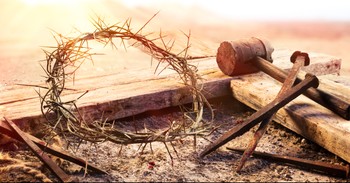
Nothing like the new church of Constantinople had been seen before. Borrowing from several earlier architectural styles, Anthemius of Tralles and Isidorus of Miletus created the masterpiece of sixth-century Byzantium. Although they were not professional architects, Emperor Justinian chose them, presumably because they had helped construct some of his military works. At any rate, they applied mathematics to the structure in a manner new to architectural design. The result was a work of grace and beauty.
Because its dome was set upon a ring of closely spaced windows, the Hagia Sophia (Church of the Holy Wisdom) was so "... full of light and sunshine; you would declare that the place is not lighted by the sun from without, but that the rays are produced within itself, such an abundance of light is poured into this church...." wrote a contemporary. Some described the space within as seeming infinite.
Emperor Justinian had spared no expense to erect this masterpiece, which went up in the astonishing span of just five years. This was possible because Justinian lavished money on the enterprise. One source estimates he spent as much as 23 million gold solidi on the building (the equivalent of $25 billion dollars* in today's purchasing power). 40,000 pounds of silver were used in the decor alone.
When the emperor inspected the largely-completed work shortly before its consecration, he was silent for a long time. His eyes scanned its contrasts of gold with blue, the alternation of vertical and horizontal marble slabs, and the opposition of carven columns to curved arches. These created an interior beauty that made space seem to melt into space so that it was hard for the eye to gauge distances. "Solomon, I have surpassed you!" he exclaimed at last.
And in truth, no temple of antiquity had ever come close to the originality and magnificence of this. It had been made possible only by Justinian's zeal. At first it was simply called the "Great Church," but later the name "Holy Wisdom" was applied to it.
On this day, December 27, 537, Patriarch Menas of Constantinople consecrated the architectural masterpiece. Eventually a bridge linked the church directly to the nearby imperial palace. Six hundred religious workers served the building, in which important religious functions of the empire took place. According to the Patriarchate of Constantinople, these workers included 80 priests, 150 deacons, 40 deaconesses, 60 subdeacons, 160 readers, 25 chanters, and 75 doorkeepers.
--------*This estimate is arrived at through the following reasoning: a gold solidus was worth 25 silver denarii. A denarius was a day's wage for a common laborer. At a minimum wage of $US 5.50 an hour, a denarius would be equivalent to $44 in buying power. The rest is multiplication.
Bibliography:
- Aland, Kurt. Saints and Sinners; men and ideas in the early church. Philadelphia: Fortress Press, 1970.
- Browning, Robert. Justinian and Theodora. New York: Praeger, 1971.
- "Hagia Sophia. Little chronicle of the Great Church." Byzantine Monuments. Ecumenical Patriarchate of Constantinople. http://www.patriarchate.org/ ecumenical_patriarchate/chapter_4/ html/hagia_sophia.html
- Moorhead, John. Justinian. London and New York: Longman, 1994.
- Procopius. "De Aedificis." Medieval Sourcebook. http://www.fordham.edu/halsall/ source/procop-deaed1.html
Last updated July, 2007


